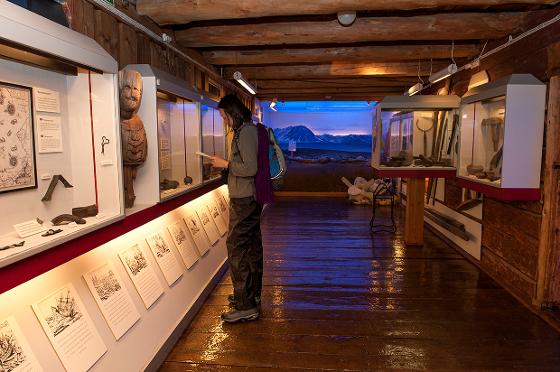Svalbard in the 17th and 18th centuries
Permanent exhibitionArtefacts from Willem Barents’ camp at Novaya Zemlya, and Russian Pomor stations at Russekeila portray early hunting and trapping in the Arctic.
This exhibition deals with the earliest European hunting period in Svalbard in the 17th and 18th centuries. The hunting began in earnest after explorers such as Willem Barents returned home with stories of rich animal life in the Arctic. An abundance of whales and walruses led to English and Dutch ships heading north. As well as exploiting the maritime resources, they tried to find the fastest possible sea route to Asia. The Arctic offered good opportunities to return with attractive commodities for the European market such as whale and walrus oil, tusks, hides and furs.
Consequently, a race northward for natural resources arose in the 17th and 18th centuries between the two major maritime nations of England and the Netherlands. The intensive European whaling period that followed gradually also involved nations such as Russia, France, Spain and Norway.
The Arctic climate presented challenges for those who headed north with ships and clothes that were not suitable for the cold conditions. Many Western European whalers met their fate on the Arctic Ocean, where scurvy was one of the most common causes of death. Graves, remains of building foundations, cooking pits and utility articles provide a unique insight into the hunters’ living conditions. Owing to the Arctic climate, these relics are remarkably well preserved. Today, the Arctic is becoming increasingly warmer, the permafrost is thawing and several of the graves are about to be lost to posterity. Textiles are rotting and skeletons are coming to the surface as erosion and rising temperatures take over.
